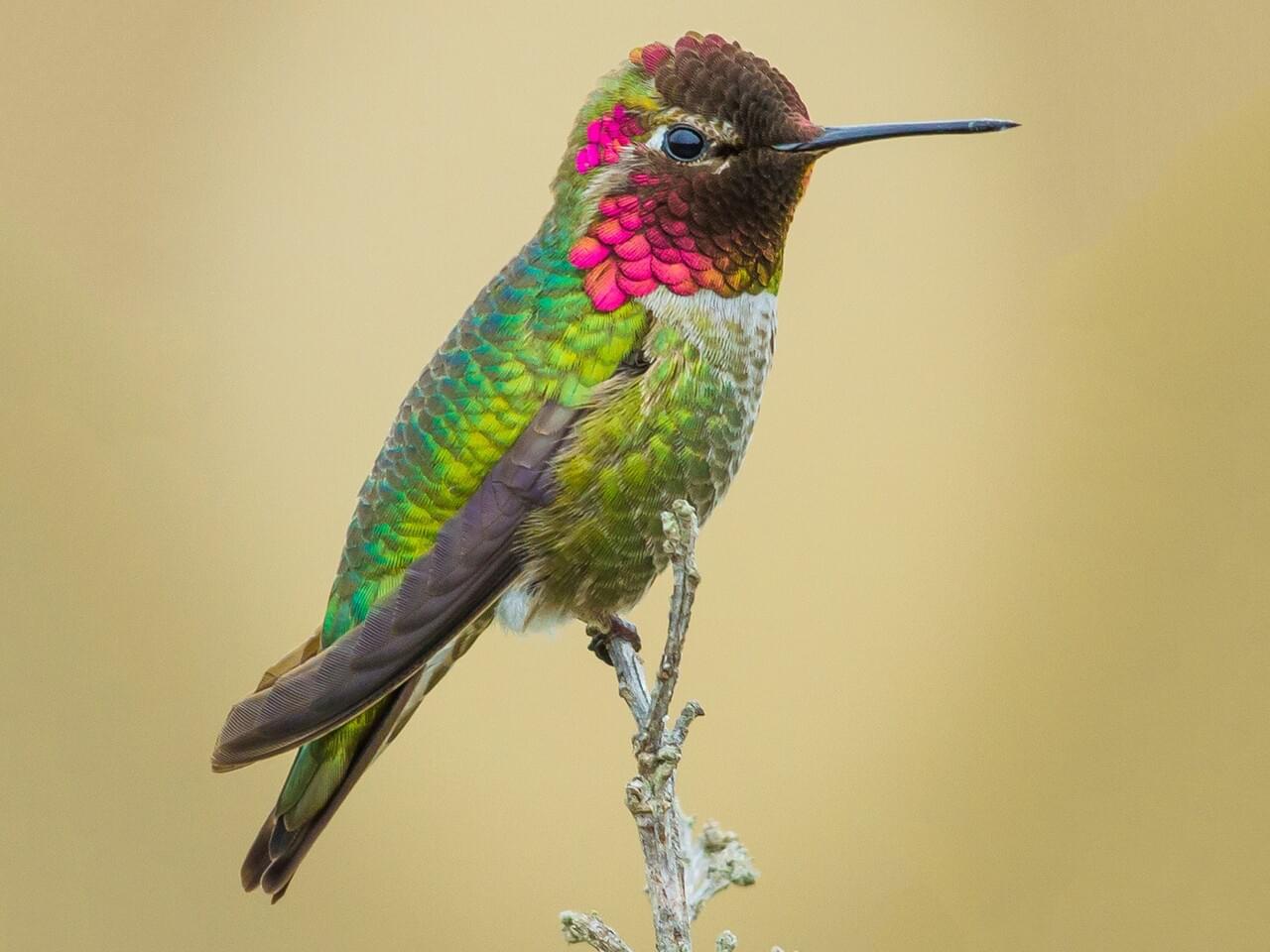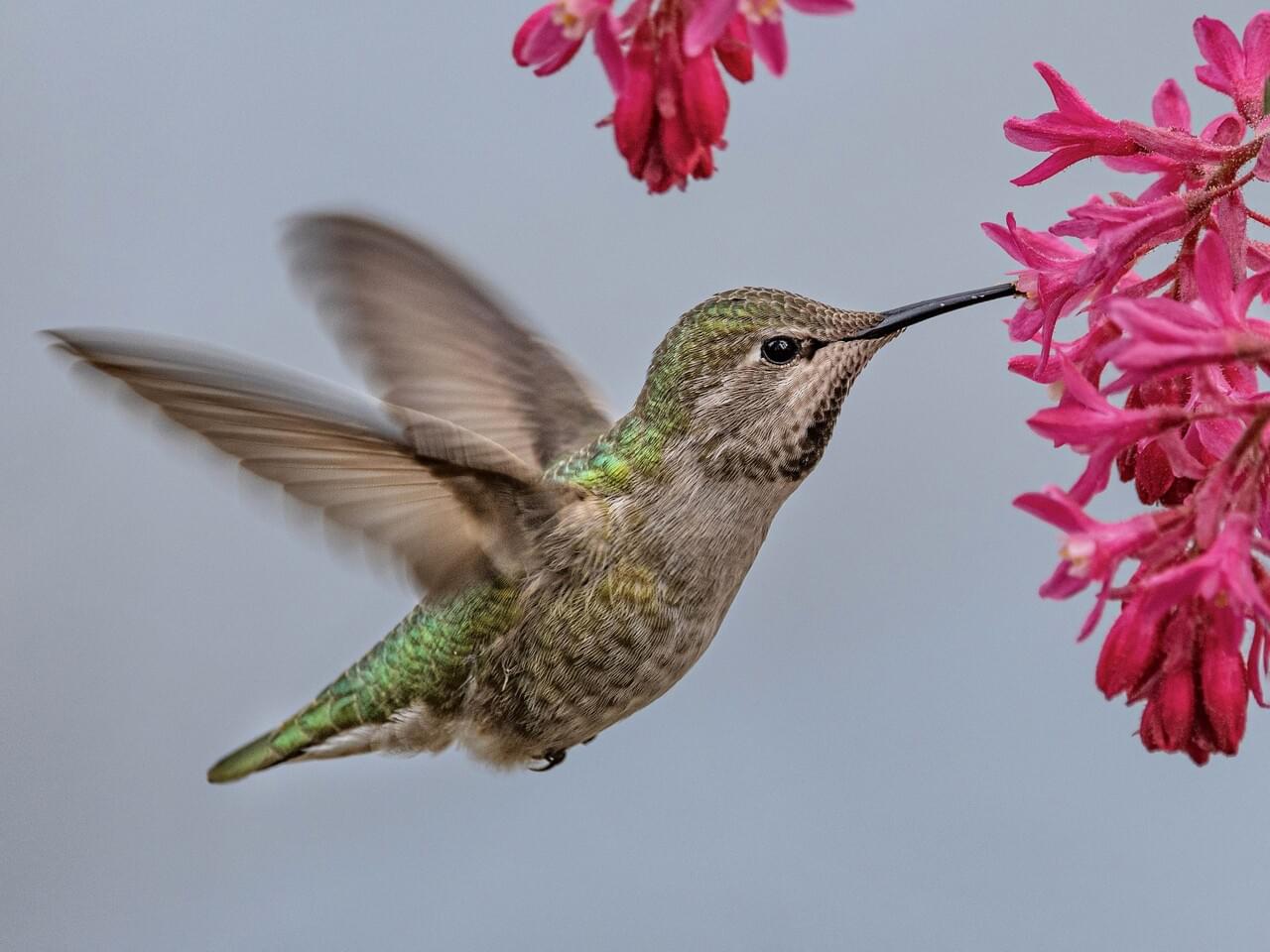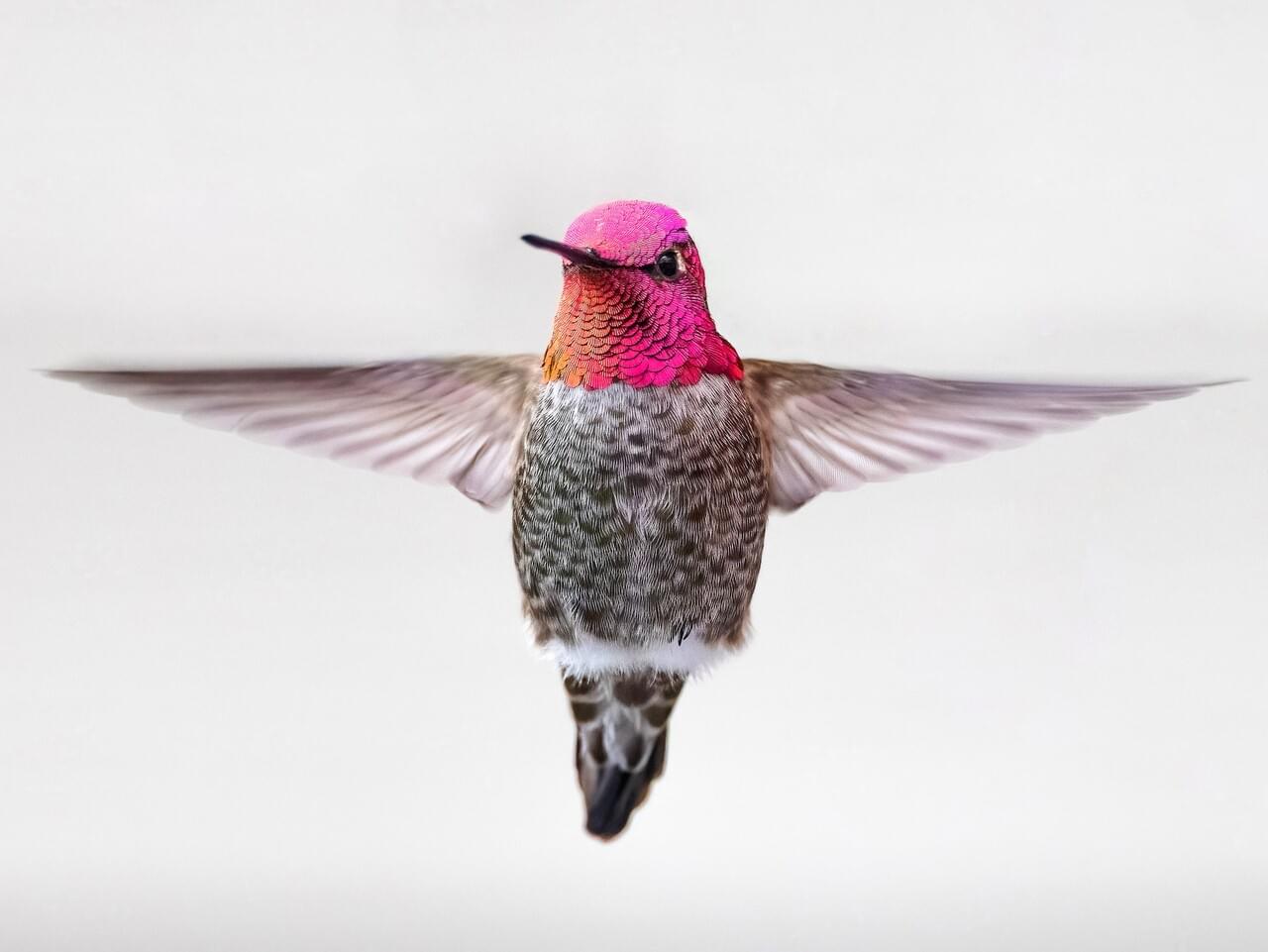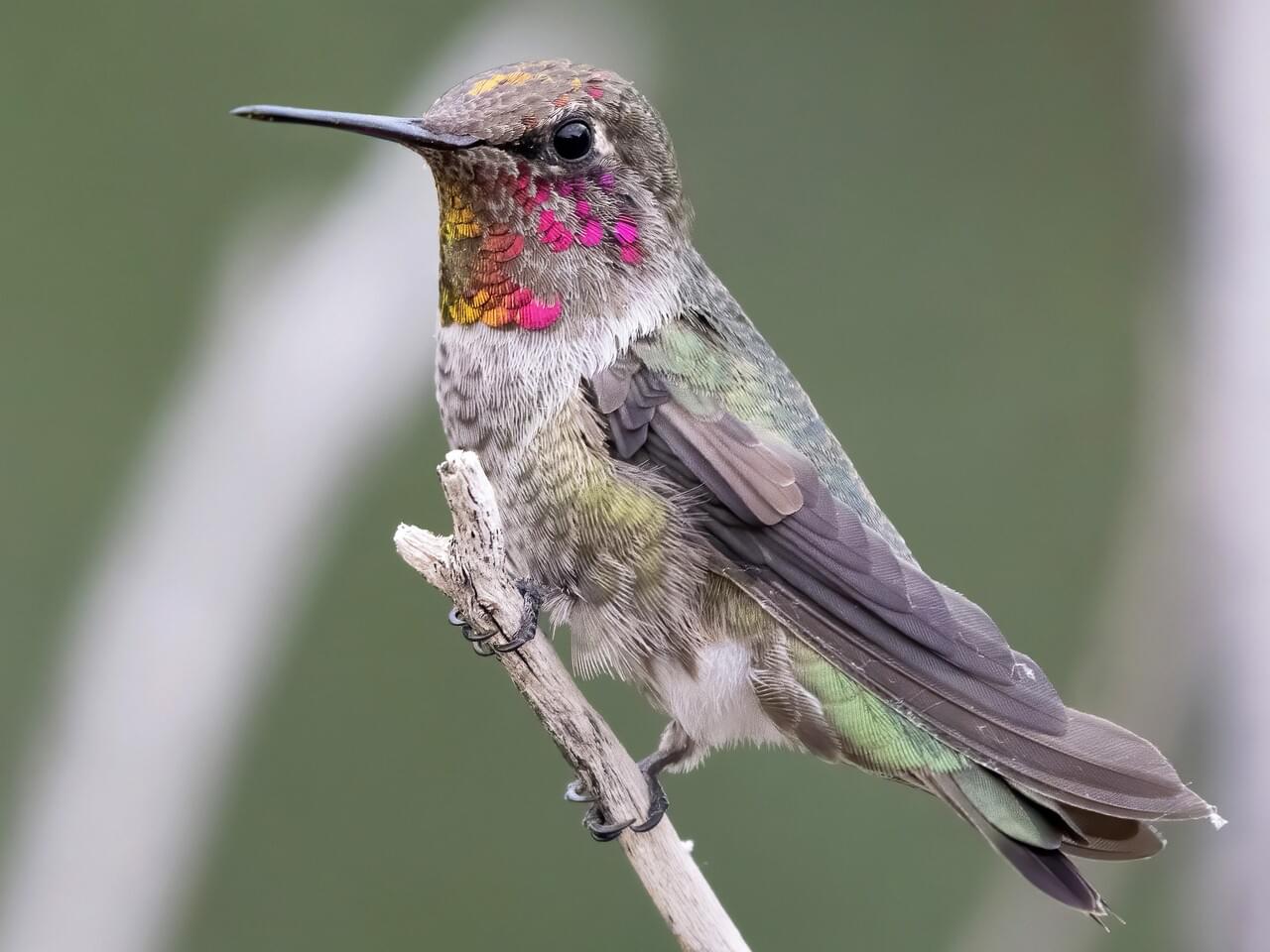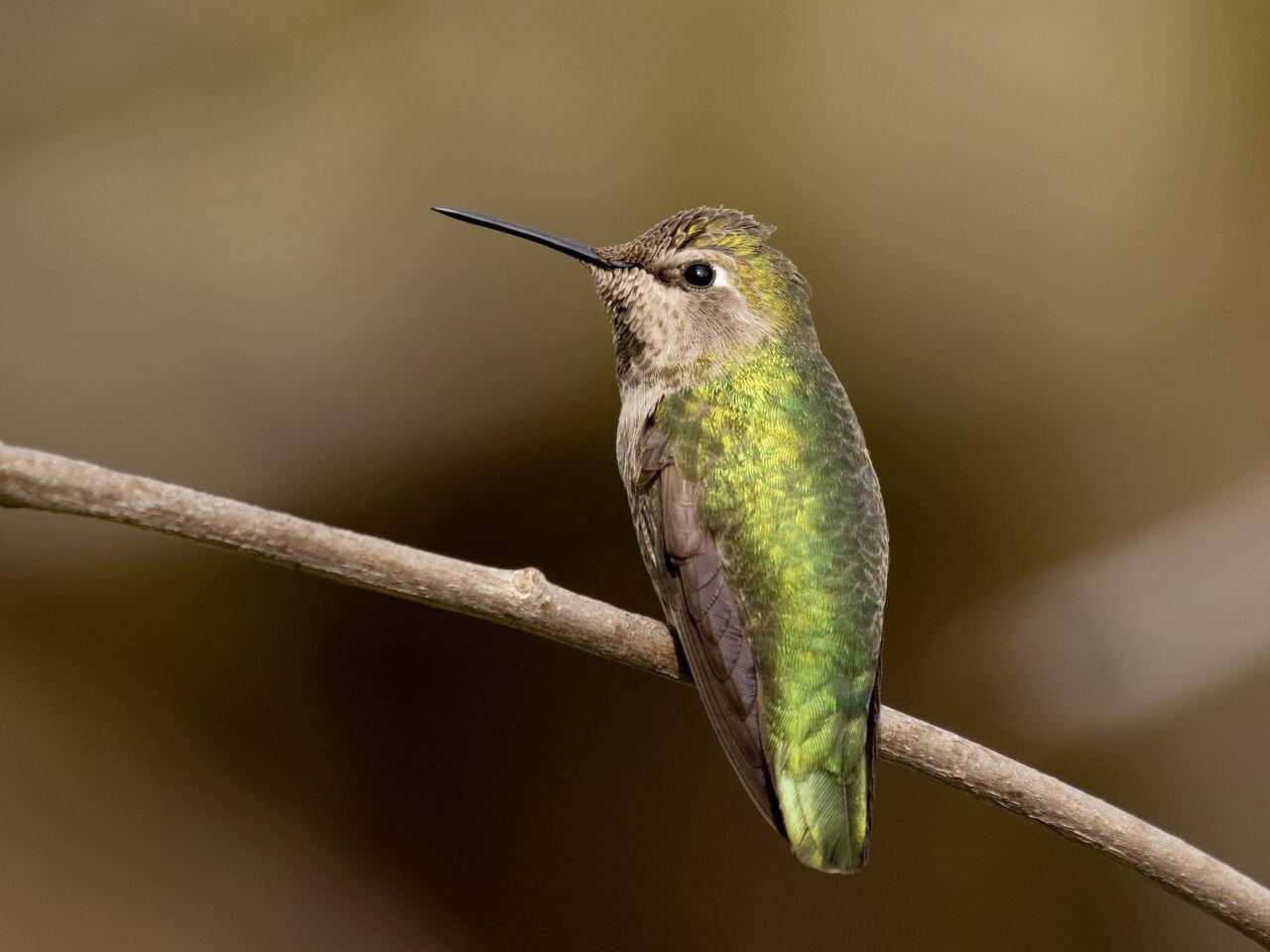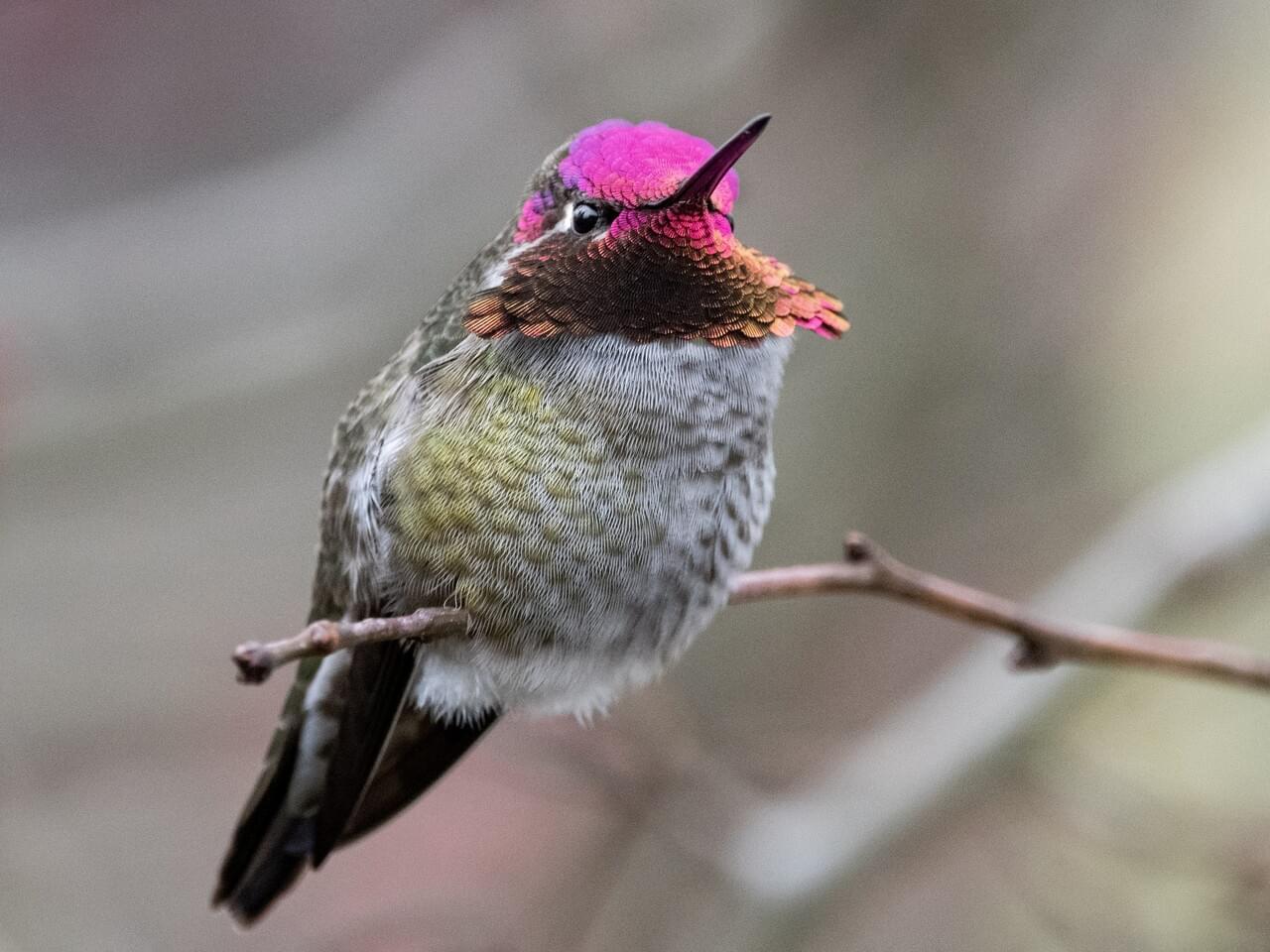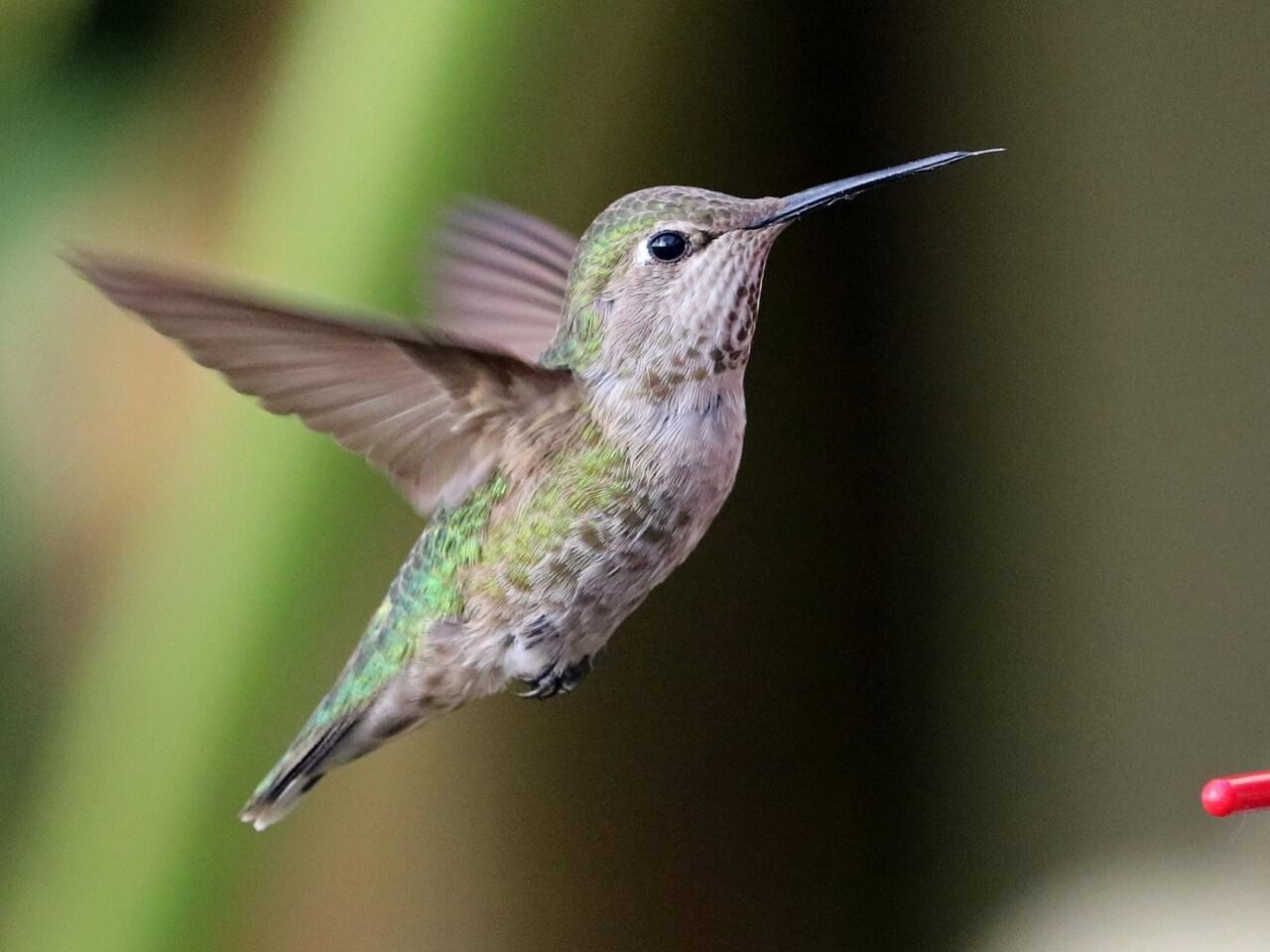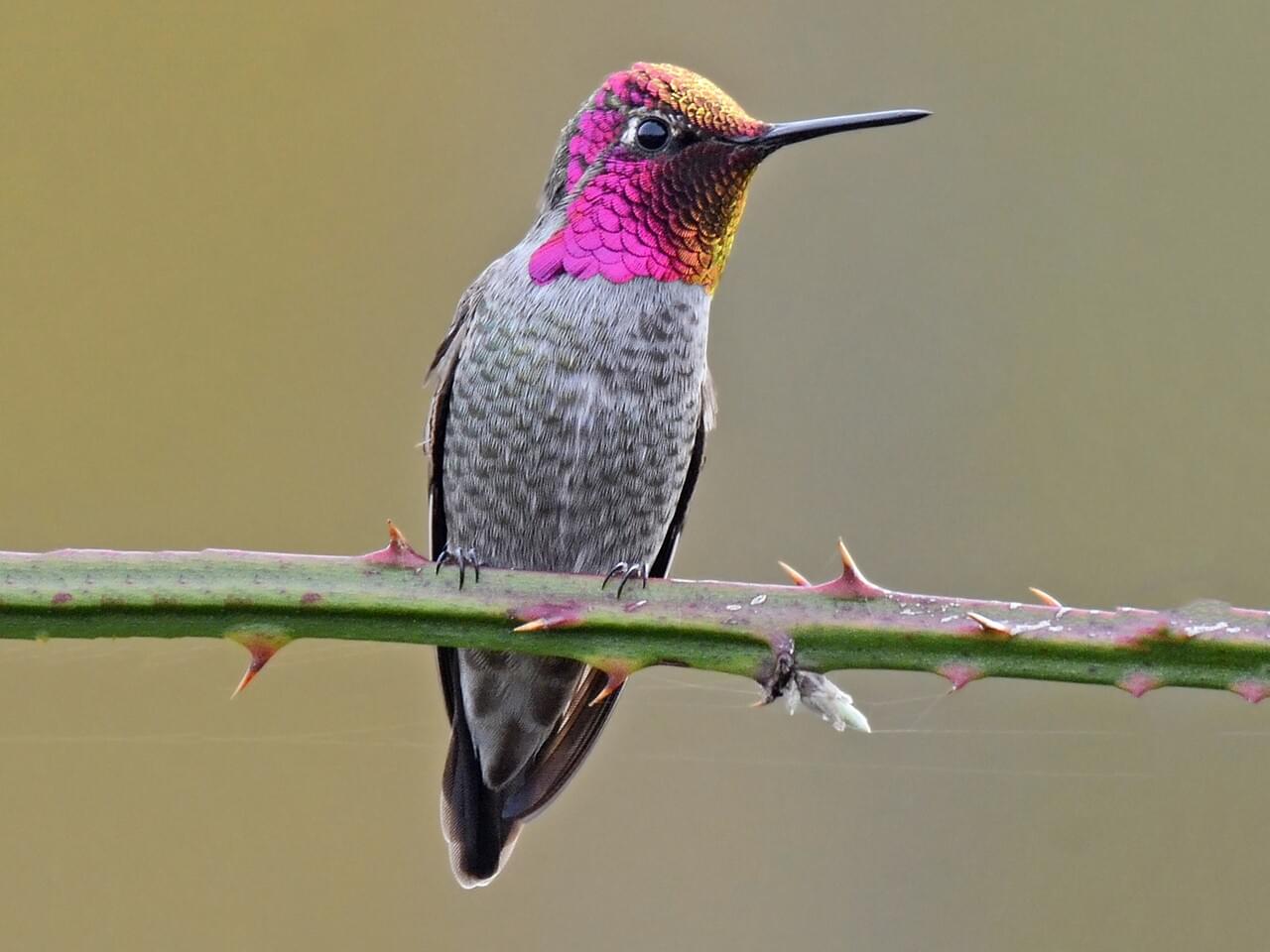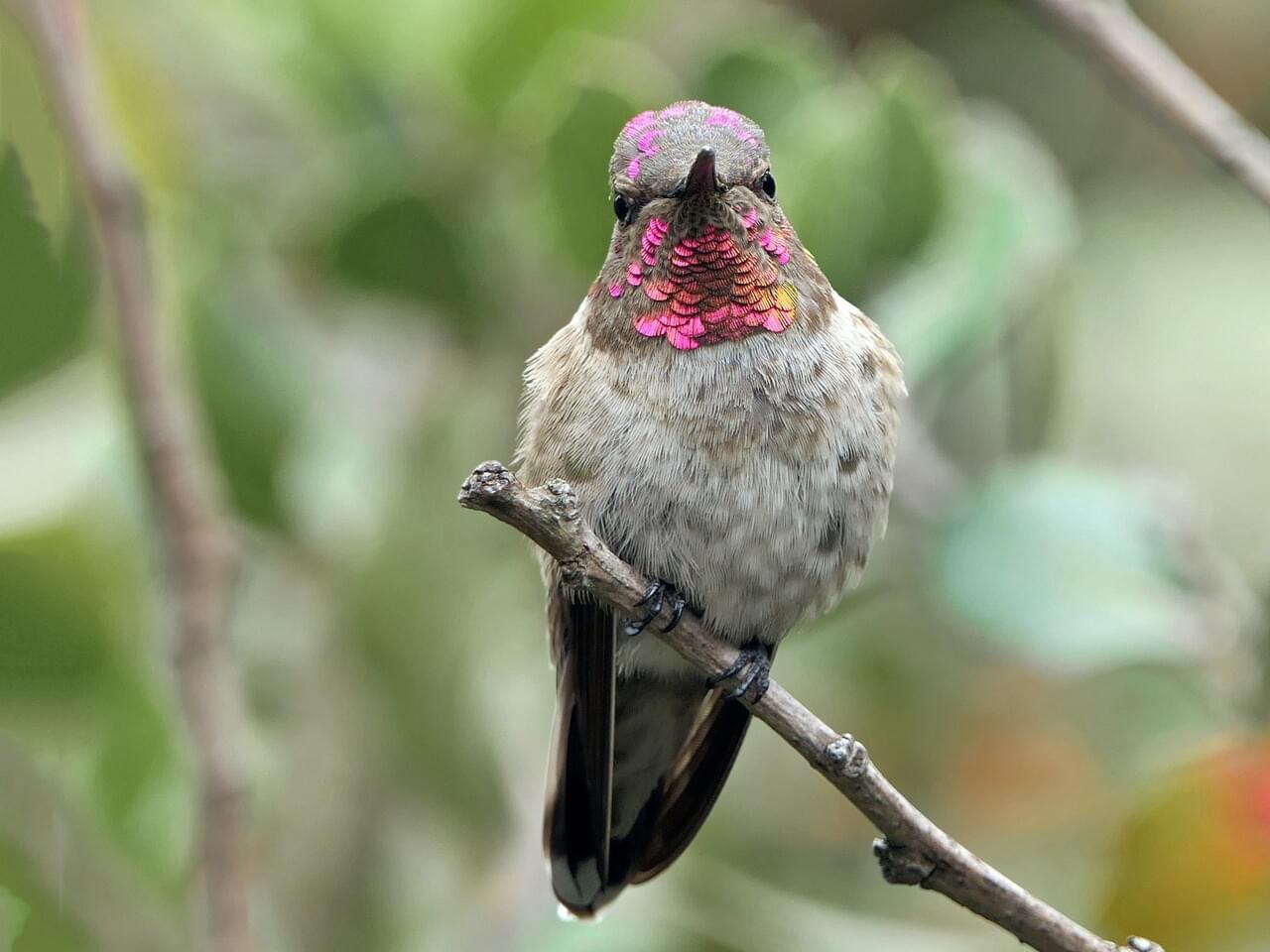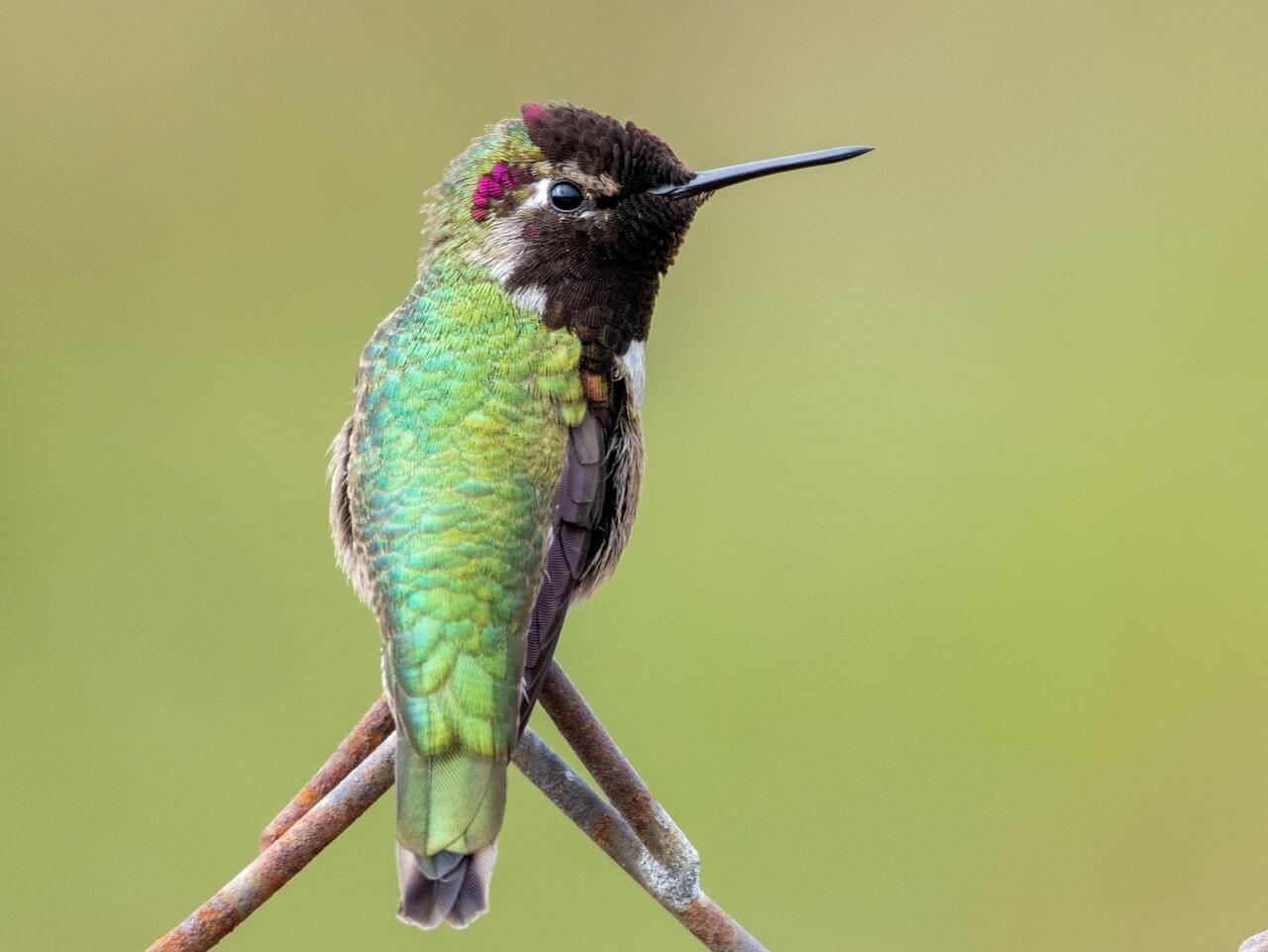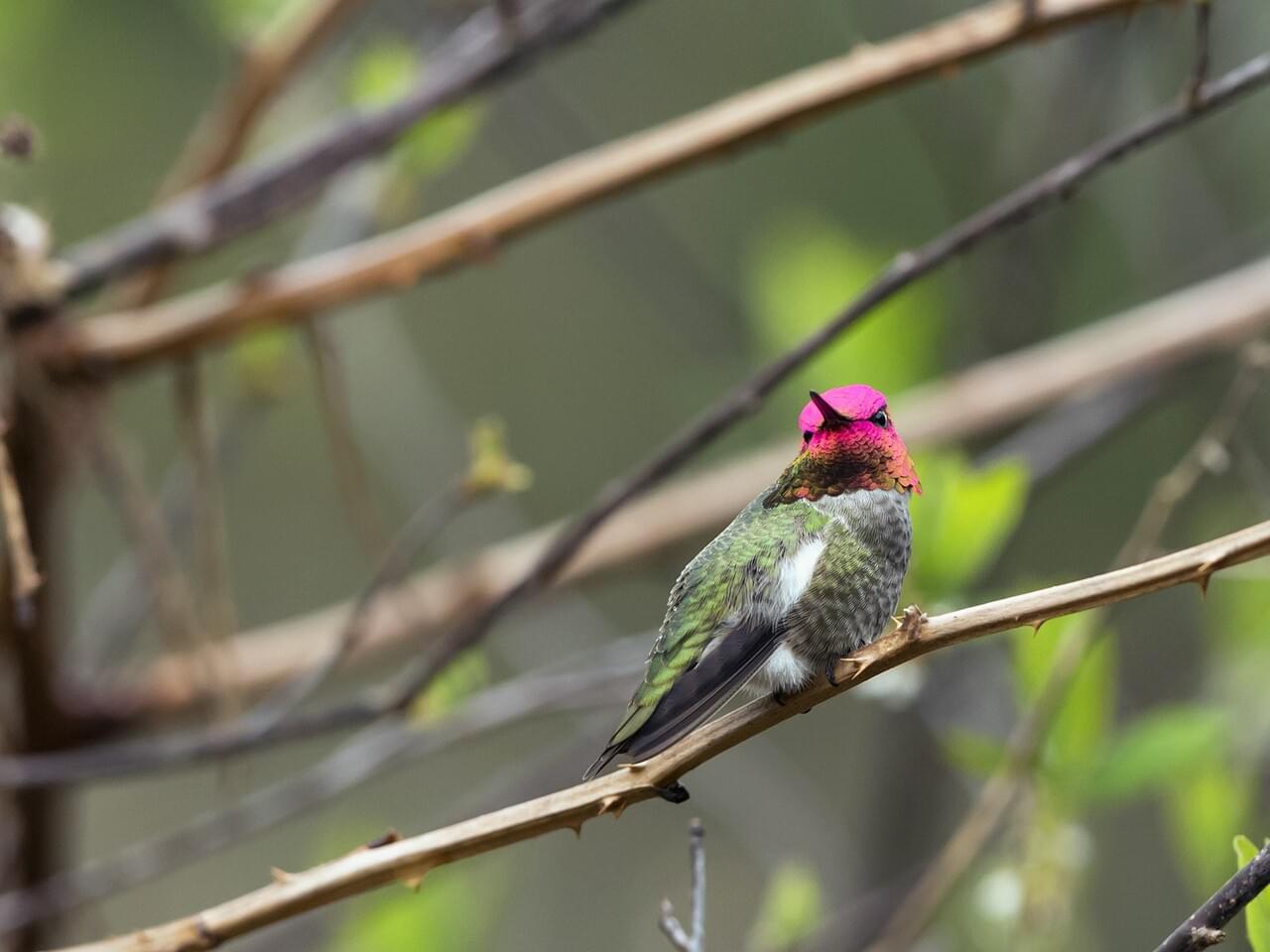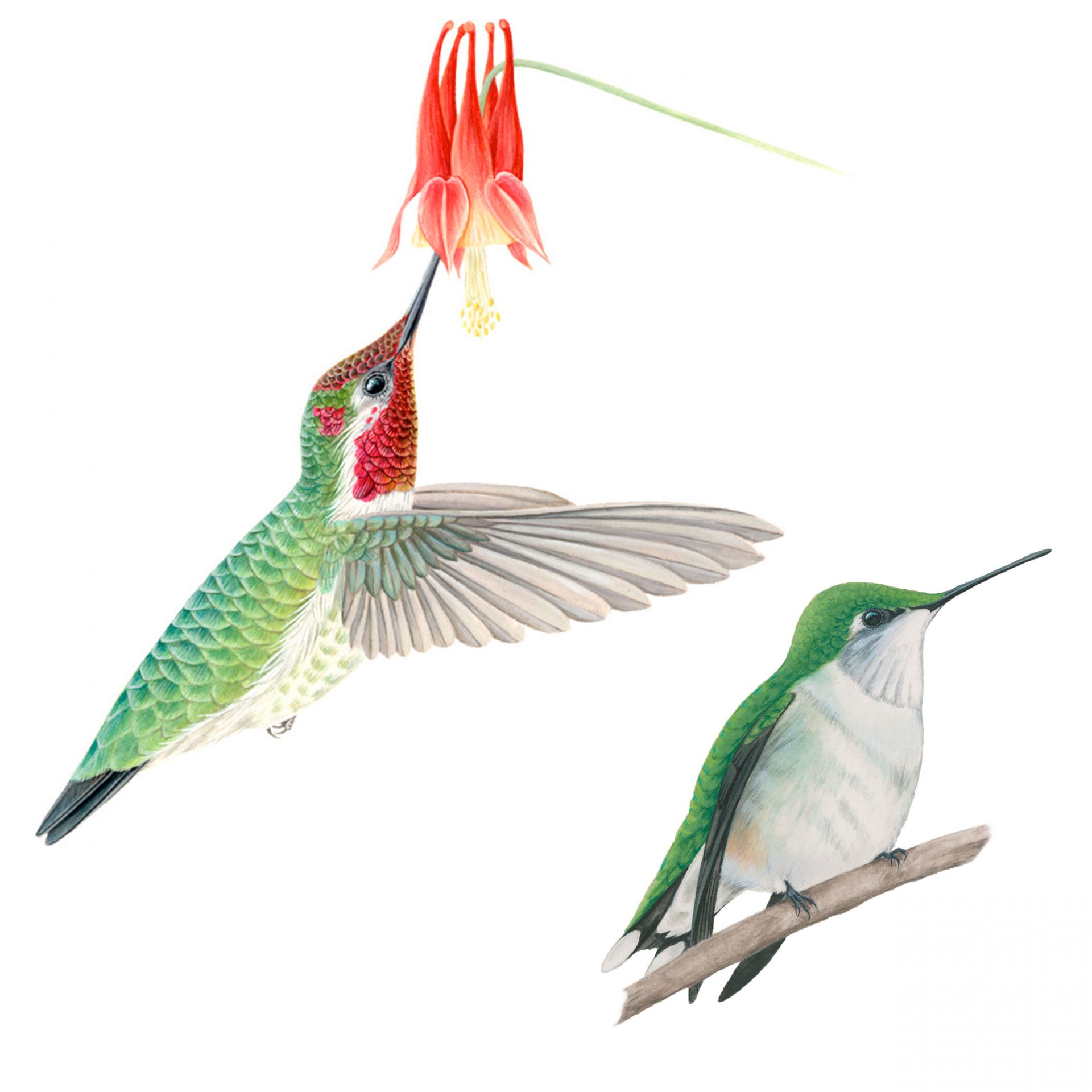 Photo ©
Liz Clayton Fuller
Photo ©
Liz Clayton Fuller
Anna’s Hummingbird
Anna’s Hummingbirds are among the most common hummingbirds along the Pacific Coast, yet they're anything but common in appearance. With their iridescent emerald feathers and sparkling rose-pink throats, they are more like flying jewelry than birds. Though no larger than a ping-pong ball and no heavier than a nickel, Anna’s Hummingbirds make a strong impression. In their thrilling courtship displays, males climb up to 130 feet into the air and then swoop to the ground with a curious burst of noise that they produce through their tail feathers.
Range
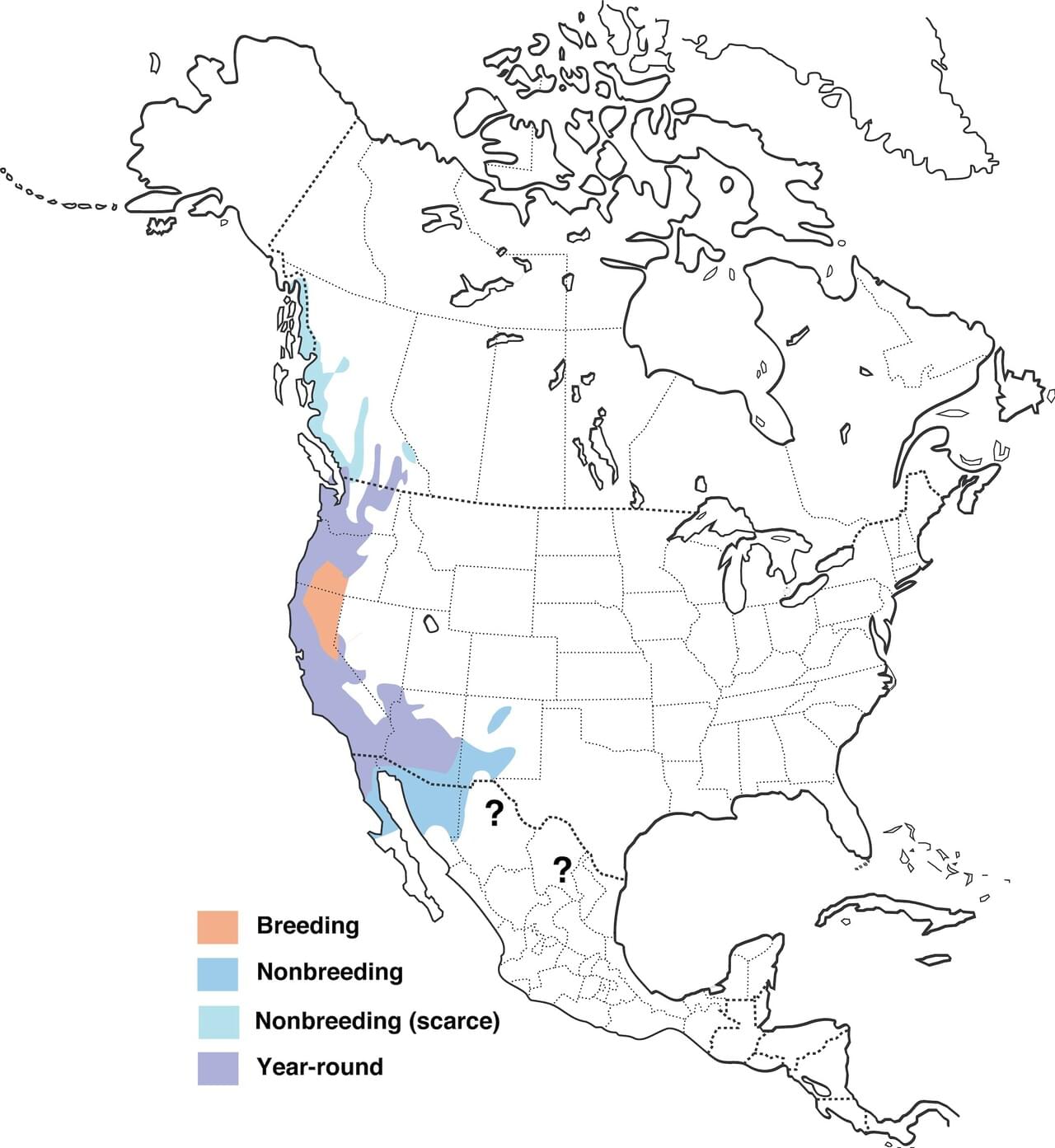
Habitat
Anna’s Hummingbirds are common in urban and suburban settings as well as wilder places such as chaparral, coastal scrub, oak savannahs, and open woodland. They are notably common around eucalyptus trees, even though eucalyptus was only introduced to the West Coast in the mid-nineteenth century.
Food
Anna’s Hummingbirds eat nectar from many flowering plants, including currant, gooseberry, manzanita, and many introduced species such as eucalyptus. They also eat a wide array of insects from understory leaves, crevices, streambanks, or caught in spider webs, plucked from the air, or taken from flowers. Primarily they target smaller insects, like midges, whiteflies, and leaf hoppers (one female was found with 32 leafhoppers in her stomach at once). They also help themselves to tree sap (and insects caught in it) leaking out from holes made by sapsuckers.
Behavior
Anna’s Hummingbirds hover deftly and zip from flower to flower. They are at their most splendid when performing their wild courtship dives. A male flies as high as 130 feet in the air and then plummets toward the ground (and the watching female), where he lets loose a unique short high-pitched noise made by air whipping through his tail feathers. As courtship progresses, the male chases a receptive female, who leads him toward her nest site, and perches again. The male then performs a “shuttle display,” where he swings back and forth about a foot above the female, keeping his body horizontal and his head down toward the female, often singing an intense song. When males are not feeding or performing, they often sit fairly high in a bush or small tree, noisily chattering. Males and females do not form pairs, and both sexes likely mate with more than one individual per season. Only the females care for the young.
Nesting
The female builds the nest out of plant down and spider webs, sitting in the nest and building the cup rim up around her. Nests take around a week to build and are 1 inch tall by 1.5 inches in diameter. They may be built of cattail, willow, leaves, thistle, or small feathers and bound together by spider webs or insect cocoons. They may decorate the outside with lichens, mosses, or even paint chips. They sometimes steal these from other active nests.
Appearance

Typical Sound
© Bob McGuire | Macaulay Library
Size & Shape
Tiny among birds, Anna’s are medium-sized and stocky for a hummingbird. They have a straight, shortish bill and a fairly broad tail. When perched, wingtips meet the tip of their short tail.
Color Pattern
Anna’s Hummingbirds are mostly green and gray, without any rufous or orange marks on the body. The male's head and throat are covered in iridescent reddish-pink feathers that can look dull brown or gray without direct sunlight.
Behavior
Anna’s Hummingbirds are a blur of motion as they hover before flowers looking for nectar and insects. Listen for the male's scratchy metallic song and look for him perched above head level in trees and shrubs.
Habitat
Anna’s Hummingbirds are common in yards, parks, residential streets, eucalyptus groves, riverside woods, savannahs, and coastal scrub. They readily come to hummingbird feeders and flowering plants, including cultivated species in gardens.
Plumage Photos
Similar Species
When identifying hummingbirds, the first step is to look at range maps. Anna’s Hummingbird is often the largest and stockiest hummingbird in its range, and its body color is a distinctive gray and green. Costa’s Hummingbird is typically lighter gray below with less extensive green flecks on the breast and belly. They have an even bigger head than Anna’s. The gorget of an adult male Costa’s Hummingbird is a much deeper purple and it extends farther on the sides of the neck, coming to a point. Black-chinned Hummingbirds are much sleeker overall with a thinner neck, a partial whitish collar, and a longer bill. The male's dark purple gorget is limited to just the throat, and the head is green. With practice, looking for the narrow shape of the inner six primary feathers is a diagnostic way to separate Black-chinned and Ruby-throated from all other North American hummingbirds. Rufous Hummingbirds always have some orange or buffy tones in the underparts and tail. In male Broad-tailed Hummingbirds the pink feathers are only on the throat, not on the crown.
- In the first half of the 20th century, the Anna's Hummingbird bred only in northern Baja California and southern California. The planting of exotic flowering trees provided nectar and nesting sites, and allowed the hummingbird to greatly expand its breeding range.
- The dive display of the Anna's Hummingbird lasts about 12 seconds, and the male may fly to a height of 40 m (131 feet) during the display. He starts by hovering two to four meters (6-13 feet) in front of the display object (hummingbird or person), and then climbs in a wavering fashion straight up. He plummets in a near-vertical dive from the top of the climb and ends with an explosive squeak within half a meter of the display object. He then makes a circular arc back to the point where he began. On sunny days the dives are oriented so that the sun is reflected from the iridescent throat and crown directly at the object of the dive.
- On rare occasions, bees and wasps may become impaled on the bill of an Anna's Hummingbird, causing the bird to starve to death.
- Hummingbirds are strictly a New World animal. They fascinated the first Europeans who arrived on the continent. Christopher Columbus wrote about them and many wondered if they were a cross between a bird and an insect (at one point being called “flybirds”). Later, their feathers became fashionable ornaments in Europe (a practice that has thankfully fallen out of favor).
- What do you call a flock of hummingbirds? Few animals have so many applicable terms, and none so beautiful. Instead of calling them a flock, choose between a bouquet, a glittering, a hover, a shimmer, or a tune of hummingbirds.
- Native Americans held hummingbirds in high esteem. Many of their legends describe them as busily bring the rain to quench eruptions or poking holes in the night sky that became the stars. The Navajo say that the characteristic mating dive is a way for them to check what is above the blue of the sky.
- The iridescent throat patch of male hummingbirds is called a gorget. The Anna’s gorget extends over its head, making it more of a balaclava than a bib. Oddly, female Anna’s have a tiny red gorget—females of most species have none.
- Anna's Hummingbirds normally have a body temperature of around 107 degrees Fahrenheit—that's a scorching temperature for a human. When outside temperatures fall, Anna's and many other species of hummingbirds enter torpor. Their breathing and heart rate slow, and their body temperature can fall as low as 48 degrees Fahrenheit. When the temperature warms, the hummingbirds can become active again in a few minutes.
- Hummingbirds have tiny legs and can neither hop nor walk, though they can sort of scoot sideways while perched.
